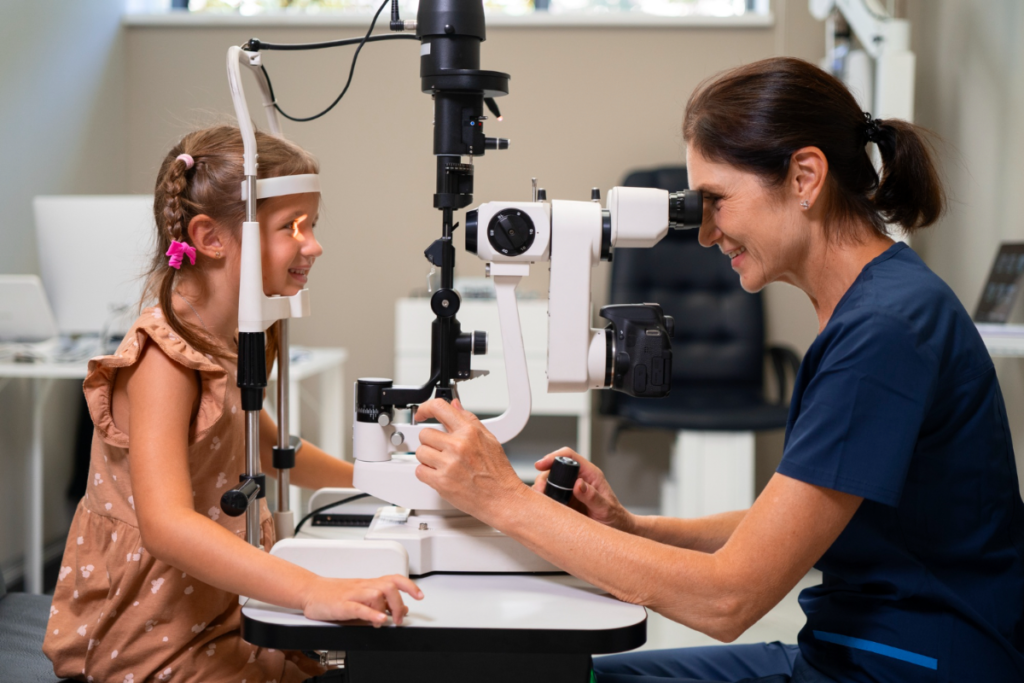
Managing patient records can be a real headache without the proper urgent care EHR software. Investing in a top-quality electronic health record (EHR) or electronic medical record (EMR) system is necessary to transform the chaos into a well-organized and efficient process.
In this blog, we’ll explore what EHR software features can shake up your center’s workflow and answer some of the most frequently asked questions about this technology.
Exploring Options for the Best EHR Software?
See How Our Urgent Care EHR Fits Your Needs
FAQ 1: What is EHR Software and How Does It Work?
Here’s the gist: An urgent Care EHR software acts as a digital filing cabinet, consolidating patient histories, diagnoses, treatment plans, medications, and test results into one accessible location. This means you can quickly access crucial data and make informed decisions without sifting through paperwork.
FAQ 2: What Key Benefits Does EHR Software Offer to Urgent Care Facilities?
Efficient operations are essential in an urgent care center, and having the right tools, like reliable EHR software, can revolutionize your practice by simplifying record-keeping and enhancing overall efficiency in managing patient information.
Here are the top benefits of EHR software and how it can significantly enhance your center’s performance.
Streamlined Patient Data Management
Gone are the days of misplaced files and confusing handwritten notes. EMR for urgent care centers organizes patient records in a neat, digital format that’s easy to update and retrieve. This means fewer errors and a clearer picture of your patient’s history.
Enhanced Efficiency
Consider EHR software your new ally in reducing paperwork. Your team can minimize administrative work by automating tasks such as data entry, appointment scheduling, and billing. It’s like having an extra set of hands to handle the details, making your operations smoother and more efficient.
Better Patient Care
A standout feature of EHR systems is its ability to provide instant access to comprehensive, up-to-date patient histories. With the right EHR software, you empower your urgent care center to make informed clinical decisions.
Compliance and Reporting
Navigating healthcare regulations can be complex, but urgent care EHR software simplifies the process. It helps you stay compliant with laws such as HIPAA and streamlines reporting, freeing you to focus on providing excellent patient care.
FAQ 3: How Can EHR Software Improve Patient Flow in an Urgent Care Center?
Maintaining an efficient patient flow is essential for delivering timely and high-quality care. EMR software for urgent care can revolutionize this process by streamlining operations and reducing bottlenecks.
Here’s how the best EHR for urgent care can help create a more organized and efficient patient flow in your practice:
Faster Check-In/Check-Out
EHR software addresses the long wait times plaguing hospitals by accelerating check-ins and check-outs. Patients can fill out forms online before they arrive, and digital check-out streamlines their departure, making the entire process quicker and more efficient.
Optimized Scheduling
Handling appointment slots can be challenging, but EHR software makes it easier by analyzing patterns and optimizing resource allocation. This results in fewer delays and a smoother patient flow, ensuring your operations run seamlessly and efficiently.
Real-Time Data Access
EMR for urgent care centers delivers the most current patient data exactly when needed, allowing your team to respond swiftly and effectively to patient needs. This capability enhances overall operational efficiency and improves the quality of care.
FAQ 4: What Should Urgent Care Centers Look for When Choosing EHR Software?
Selecting the right urgent care EHR software is crucial for optimizing operations. Consider these factors to ensure the software you pick supports your center’s goals:
User-Friendly Interface
Choose an EHR software with an intuitive, easy-to-navigate design. A user-friendly interface minimizes the learning curve and helps your team adapt quickly, reducing the risk of medical errors.
Integration Capabilities
Ensure the EHR software integrates seamlessly with your existing systems, such as practice management tools and billing software. This smooth data transfer reduces manual entry and boosts overall efficiency.
Customization Options
Top urgent care EHR systems offer customizable features like templates and workflows, allowing you to tailor the software to your center’s needs. Look for an EHR software with these options to ensure it meets your practice’s specific requirements.
Support and Training
Even with the best EHR for urgent care, initial guidance is essential. Ensure your EHR provider offers thorough training and responsive support to help your team adapt quickly and achieve long-term success.
FAQ 5: How Can EHR Software Contribute to Better Compliance and Data Security?
Staying on top of healthcare regulations can be overwhelming, but EHR software simplifies this task. Designed to help you maintain compliance with laws like HIPAA, it offers automated updates and built-in checks, allowing you to focus on running your practice without the stress of regulatory concerns.
For data security, EHR software offers robust protection with encryption, secure access controls, and regular audits, ensuring patient information remains safe. Plus, it tracks every change and access to patient records, ensuring transparency and accountability in your practice.
FAQ 6: What Are the Challenges of Implementing EHR Software in an Urgent Care Center?
Switching to a digital system involves more than just installing software; it requires careful planning, training, and adaptation. Key challenges include managing initial costs, addressing staff training, and integrating existing workflows.
Let’s break down these issues and identify ways to navigate them effectively.
Initial Costs and Investment
Implementing urgent care EHR software requires a notable upfront investment, covering software acquisition, hardware upgrades, and staff training. Although these initial costs can seem substantial, the long-term advantages—like increased efficiency, fewer errors, and enhanced patient care—usually justify the expense.
Training and Adaptation
Getting everyone comfortable with the new system can take time. Ensure that your staff receives adequate training and support to ease the transition and help them adapt quickly to the new software.
System Integration
Integrating EHR software into your existing workflows can present challenges. Planning carefully and addressing any potential issues with integrating the new system is crucial to ensure a smooth transition.
EMR-EHR: The Key to Elevating Your Urgent Care Workflow
EHR software from trusted providers like EMR-EHR can streamline your urgent care center, simplify patient data management, and enhance care quality. With instant access to medical histories, automated admin tasks, and robust compliance features, top urgent care EHR is designed to fit your unique needs and improve patient outcomes.
As the urgent care market expands from $24.3 billion in 2023 to $37.3 billion by 2032, investing in the right EHR system is crucial for elevating your practice’s productivity and patient care.
Tap Into Our Expertise
Considering a system upgrade for your urgent care center? Call us at (480) 782-1116 for a demo or a quick conversation. Our experts are ready to explore your needs and find the best solutions for your practice.

















